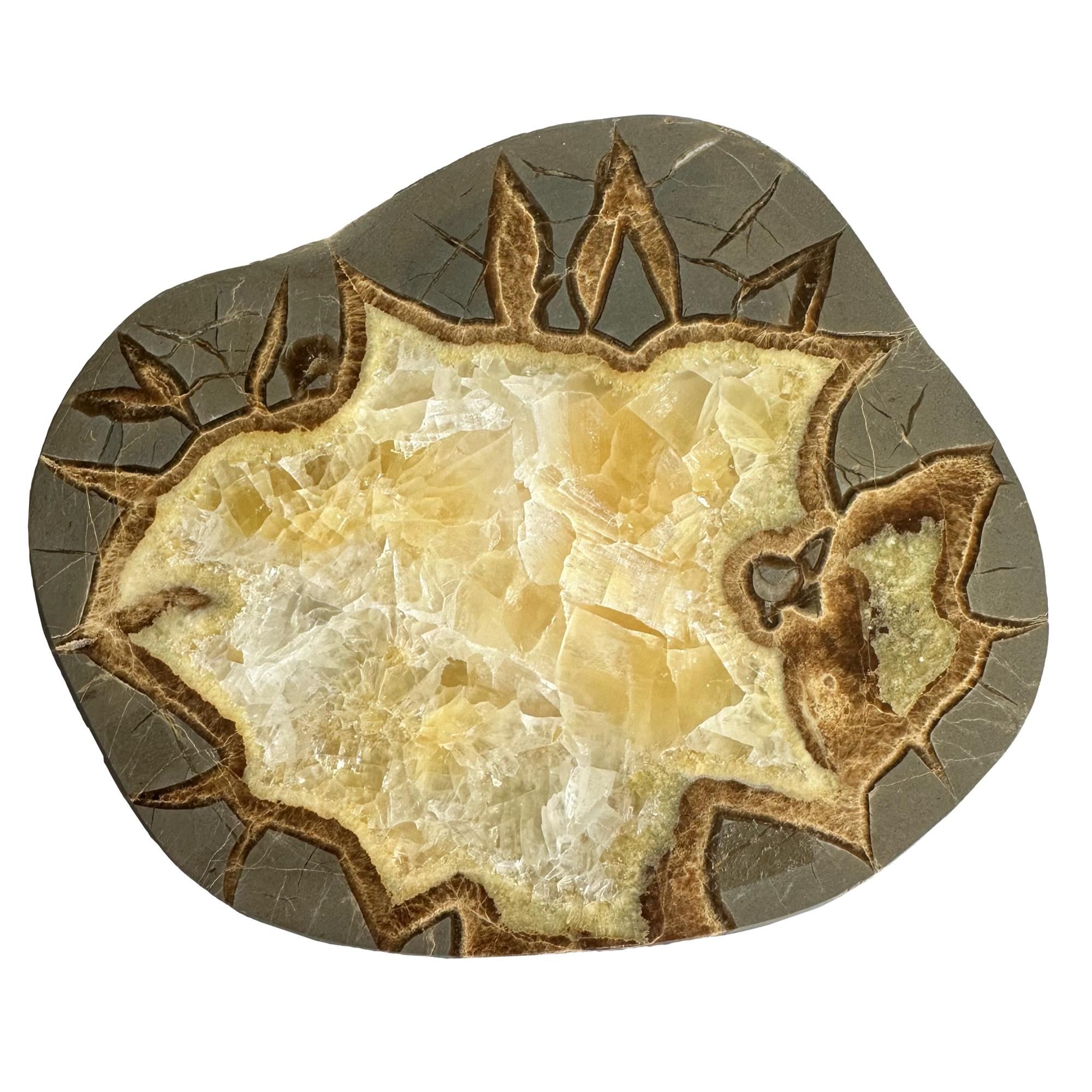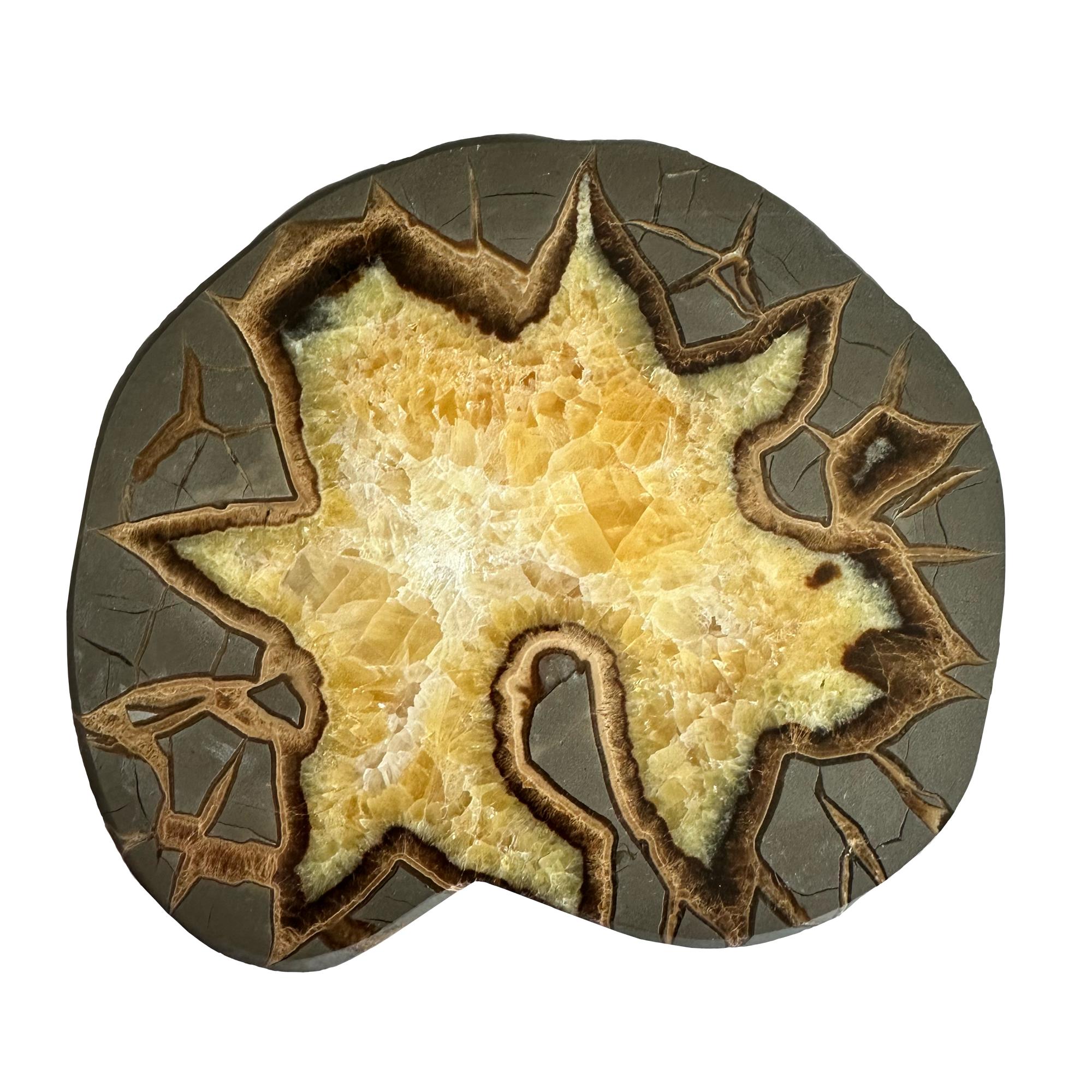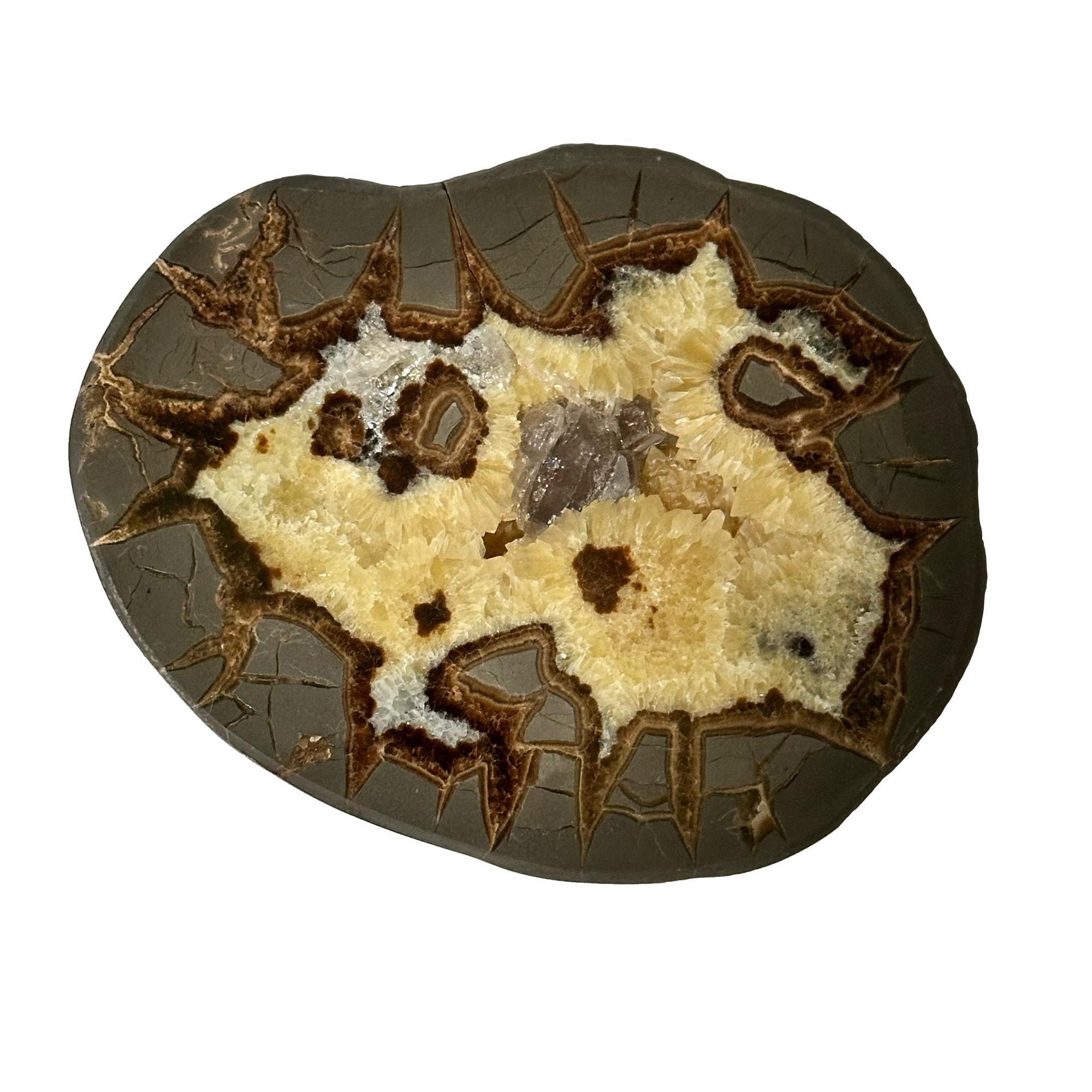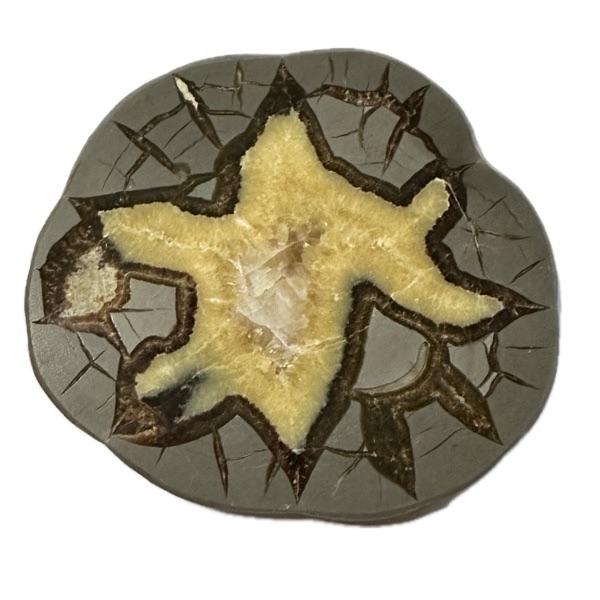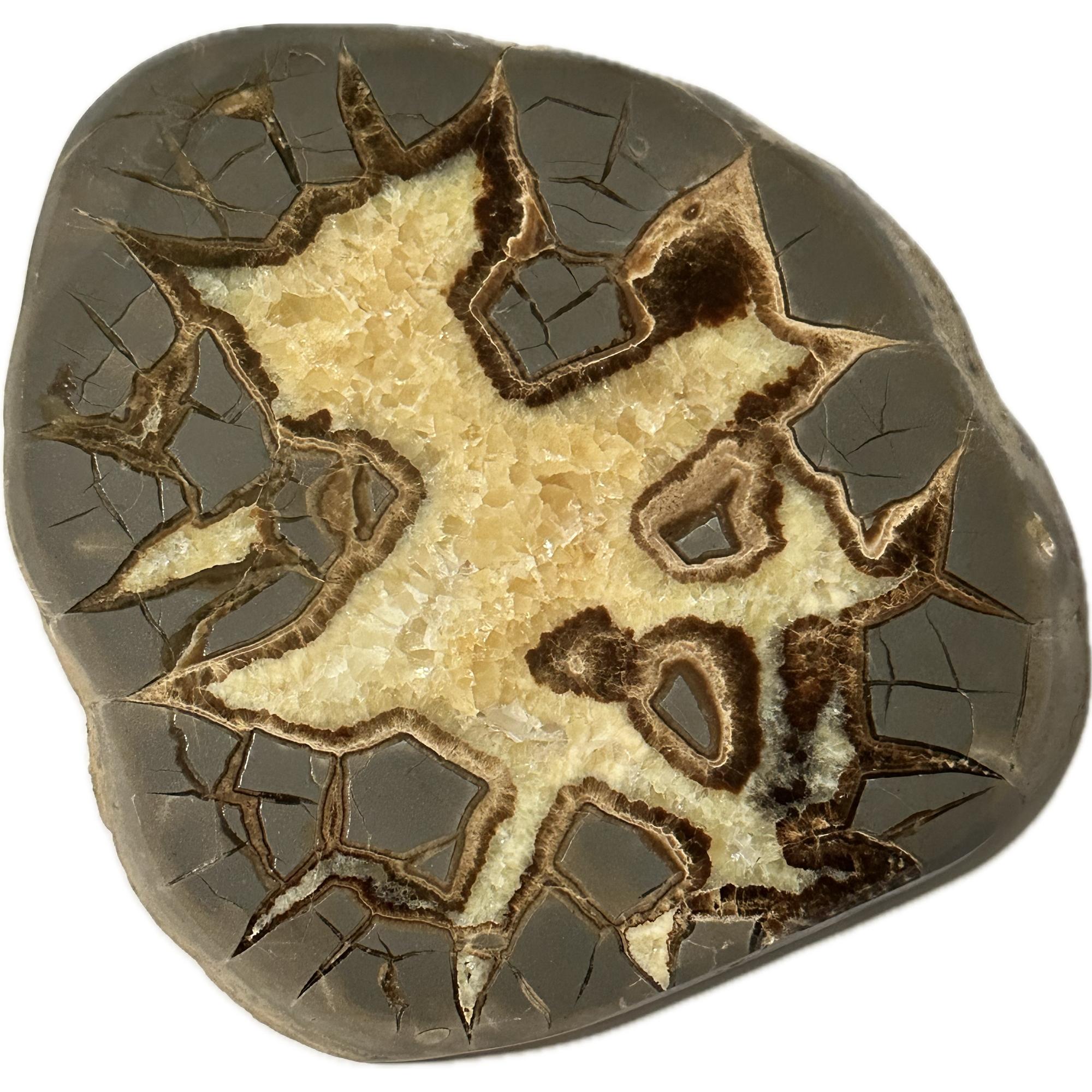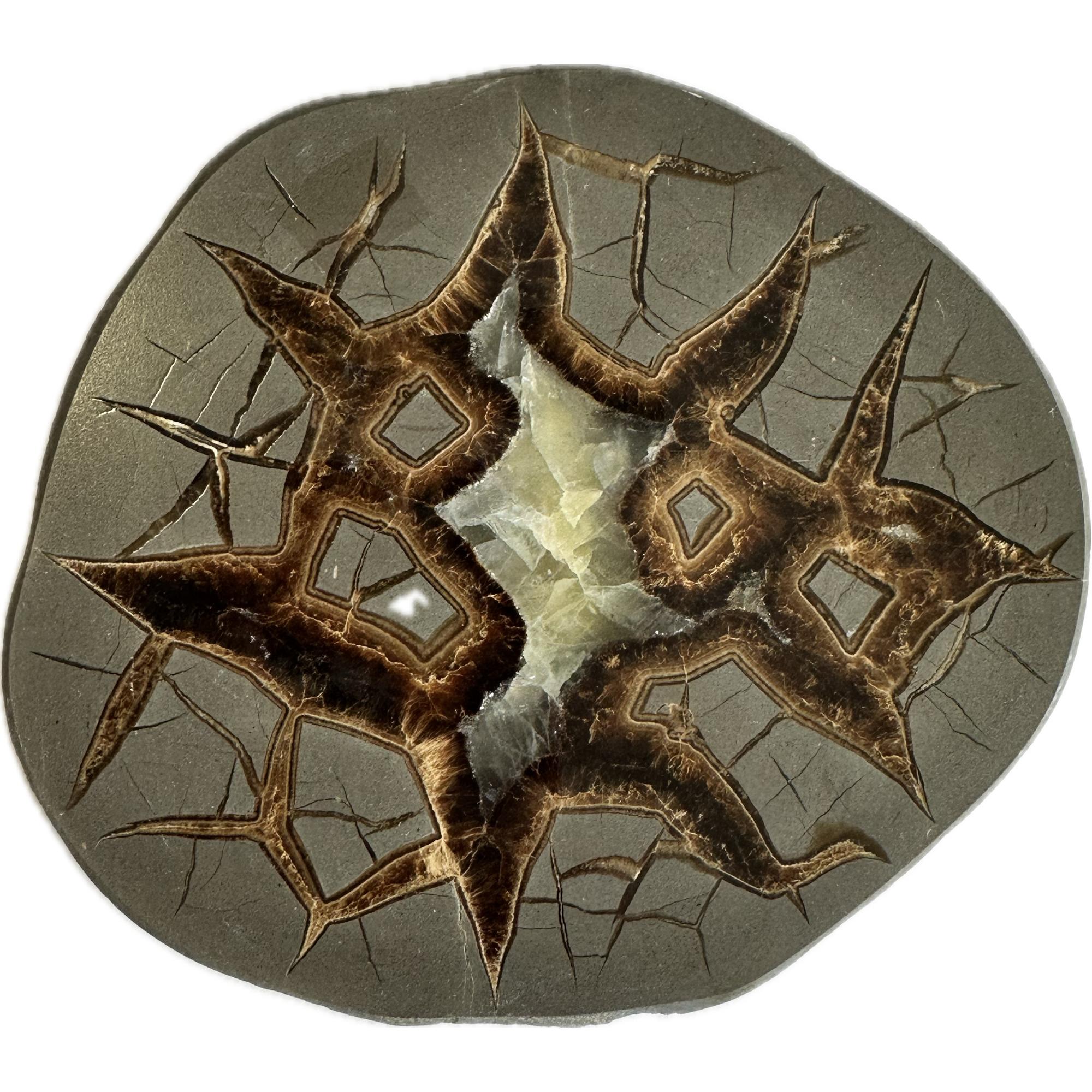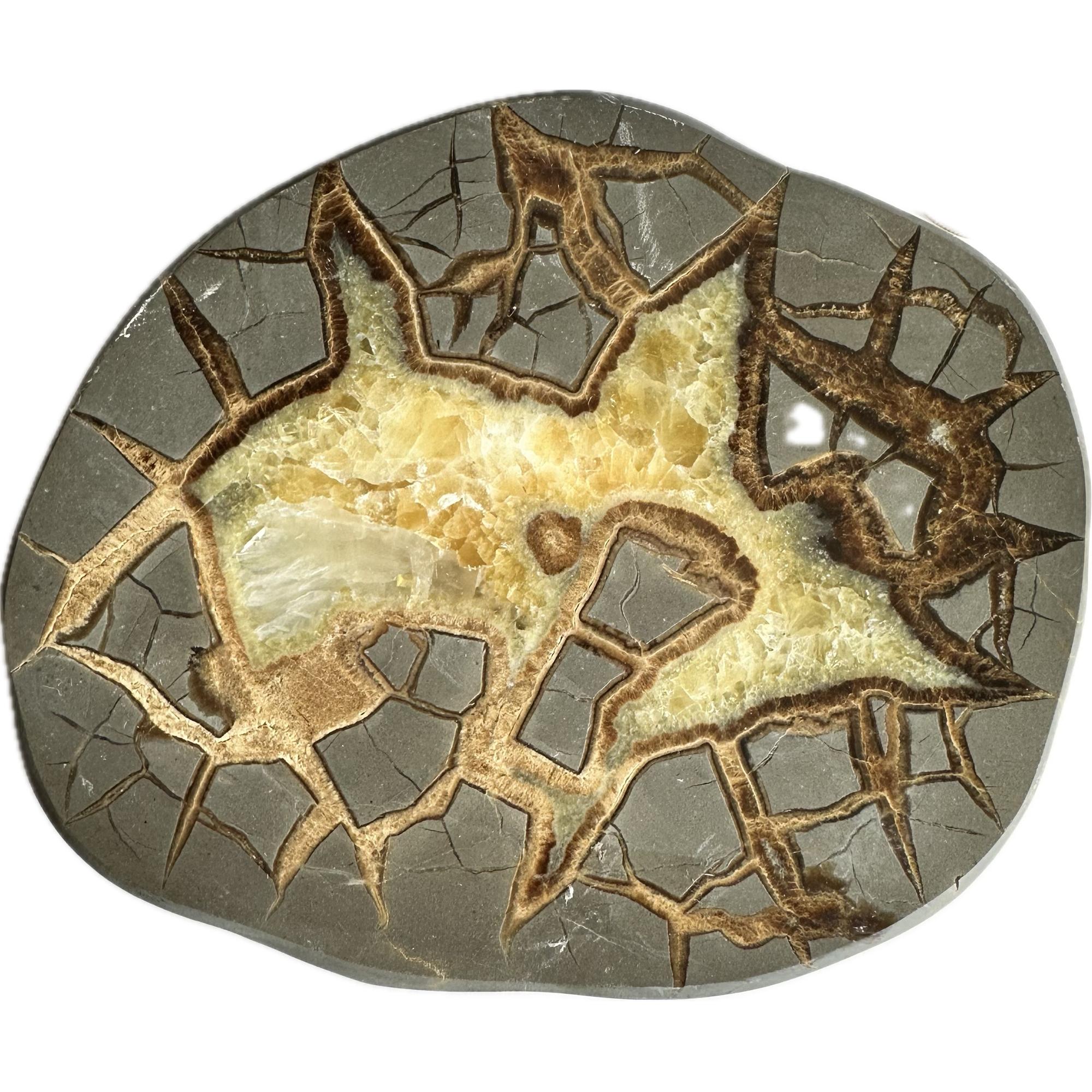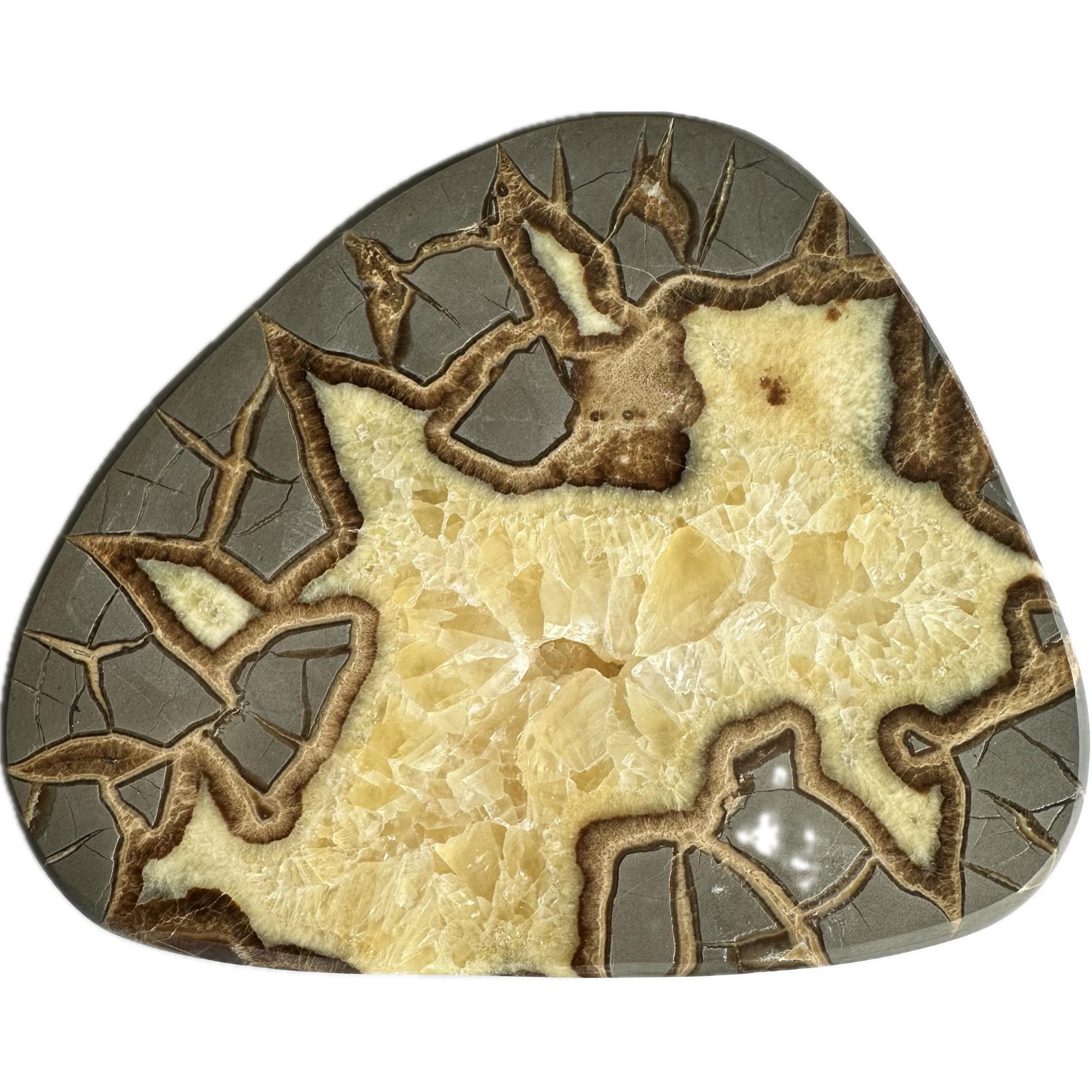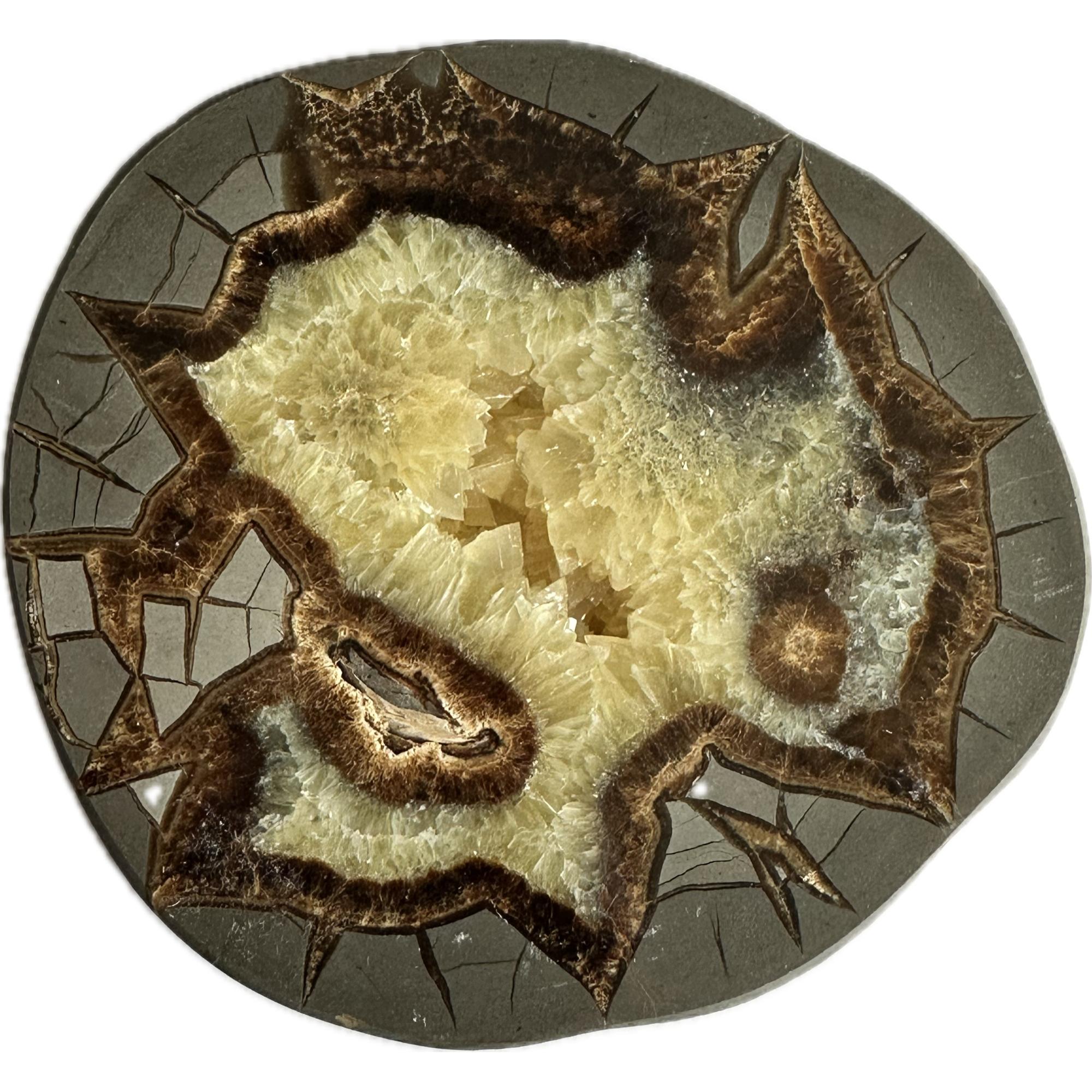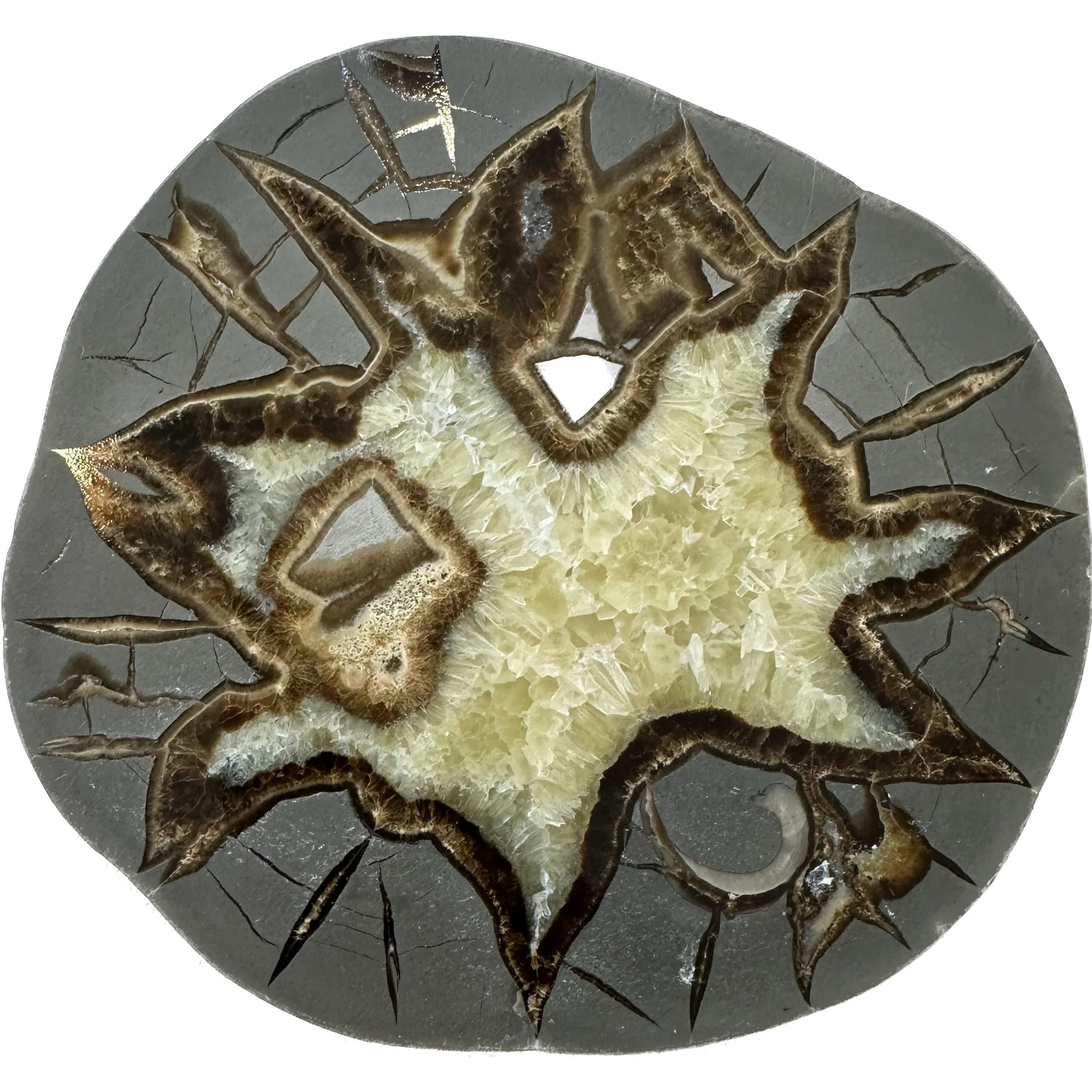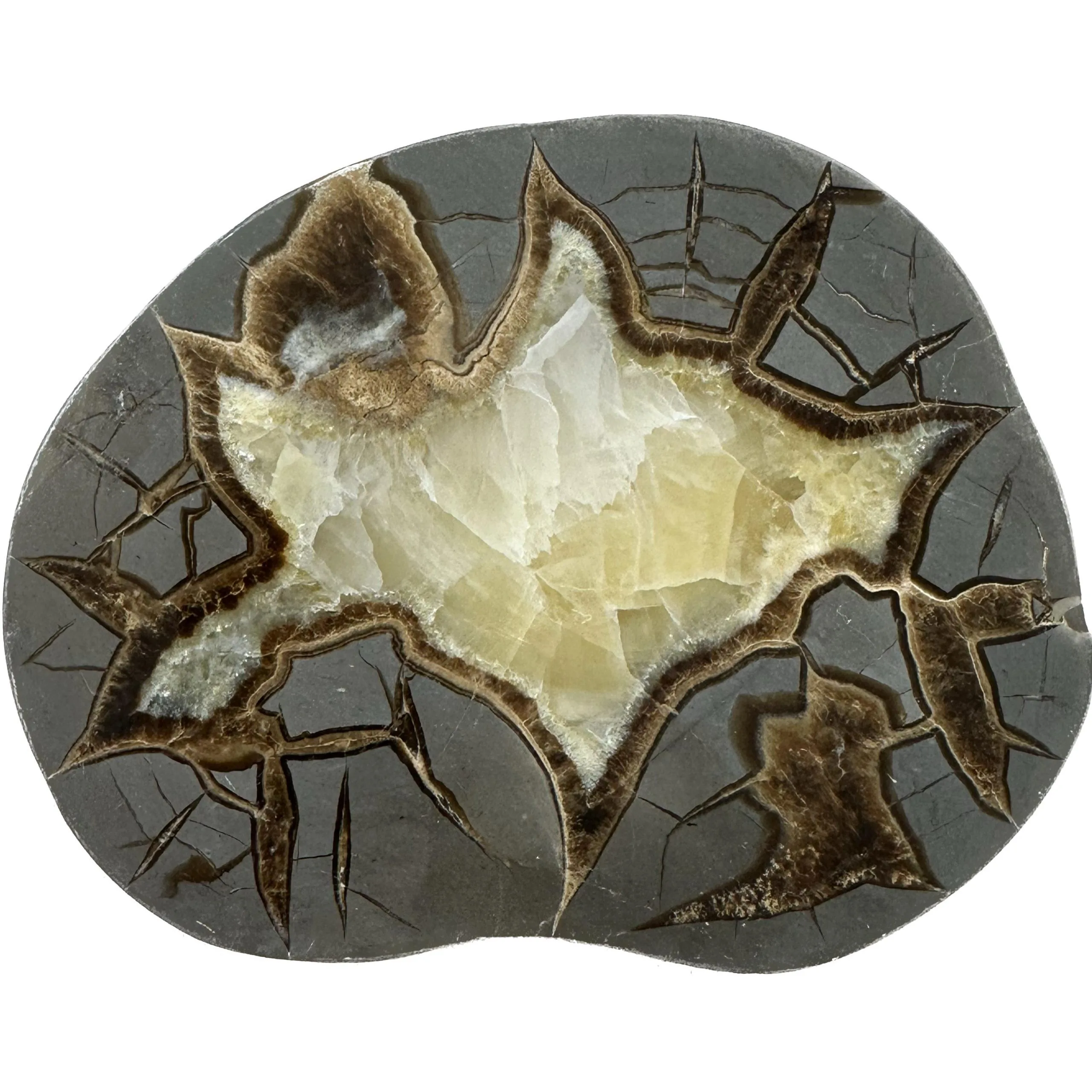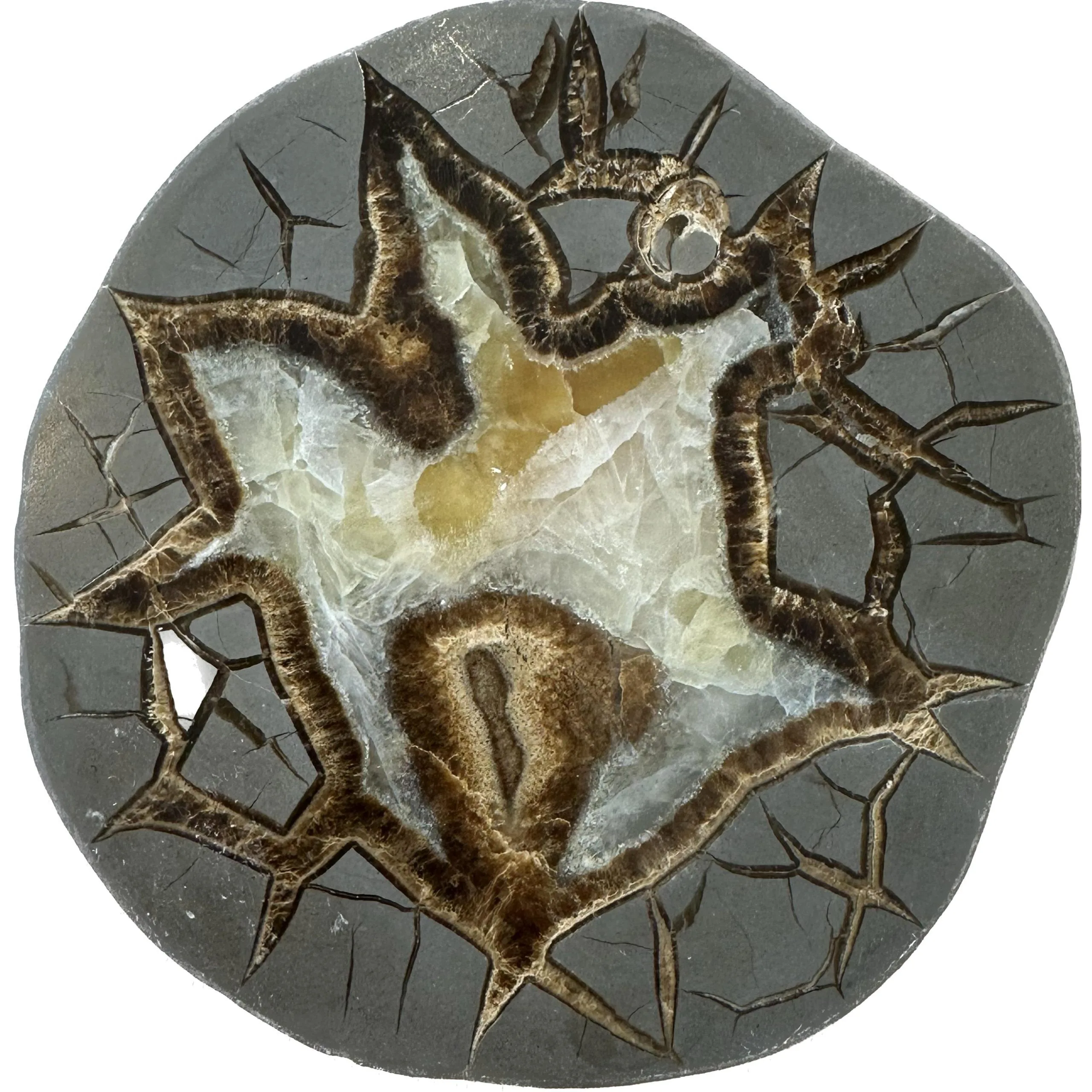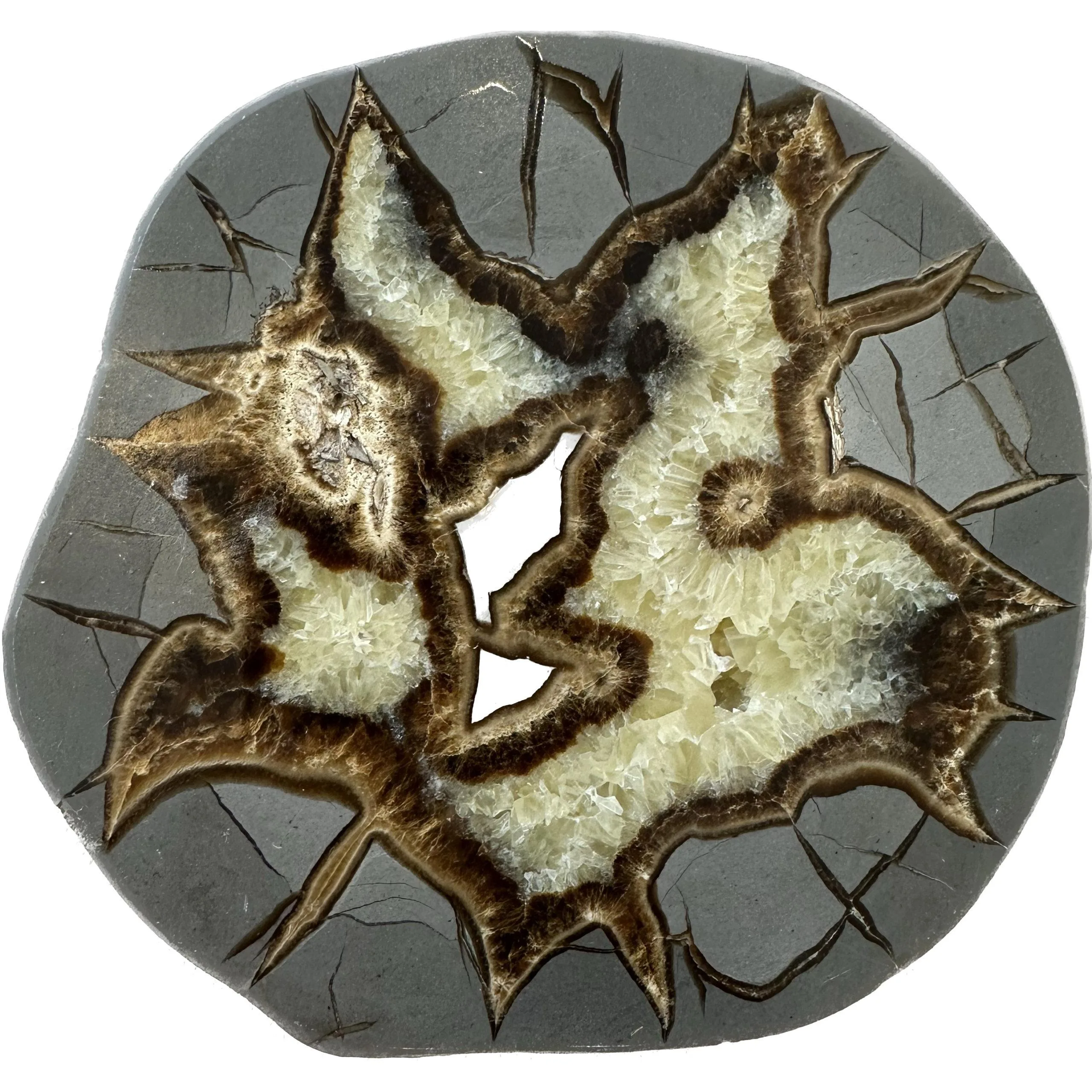Showing all 13 results
-
Septarian Slice, Delta Utah
$99.95 -
Septarian Slice, Delta Utah
$51.95 -
Septarian Slice – Utah
$74.95
Septarian slices are slices cut from septarian nodules, revealing stunning cross-sections of these unique geological formations. Like their spherical counterparts, septarian slices showcase intricate patterns and textures formed through a combination of sedimentary processes and mineralization.
Septarian nodules, initially formed in ancient seabeds or mudflats, undergo a process of concretion where sedimentation accumulates around a nucleus, such as a shell or fossil. Over millions of years, as the sediment hardens into rock, organic matter decomposes, releasing gases like methane and carbon dioxide. These gases become trapped within the sedimentary layers, exerting pressure and causing the formation of cracks known as septaria.
Through these fissures, mineral-rich fluids flow, depositing minerals like calcite, aragonite, and occasionally barite or gypsum. Over time, these minerals solidify, filling the cracks and creating the intricate patterns seen in septarian slices. Each slice offers a unique glimpse into the geological history and processes that shaped it, with concentric rings and intricate designs revealing the passage of time and the interplay of minerals.
Septarian slices are highly valued for their aesthetic appeal and are often used in lapidary work, jewelry making, and as decorative pieces. When polished, they reveal a kaleidoscope of colors ranging from warm earth tones to vibrant hues, making them prized collectibles among enthusiasts and collectors.
Beyond their visual allure, septarian slices are also believed to possess metaphysical properties, with some attributing them with grounding, balancing, and protective energies. As with many gemstones and minerals, these properties are often subjective and vary depending on individual beliefs and practices.

